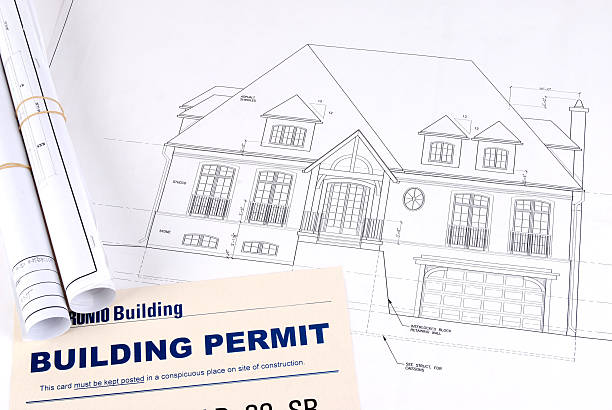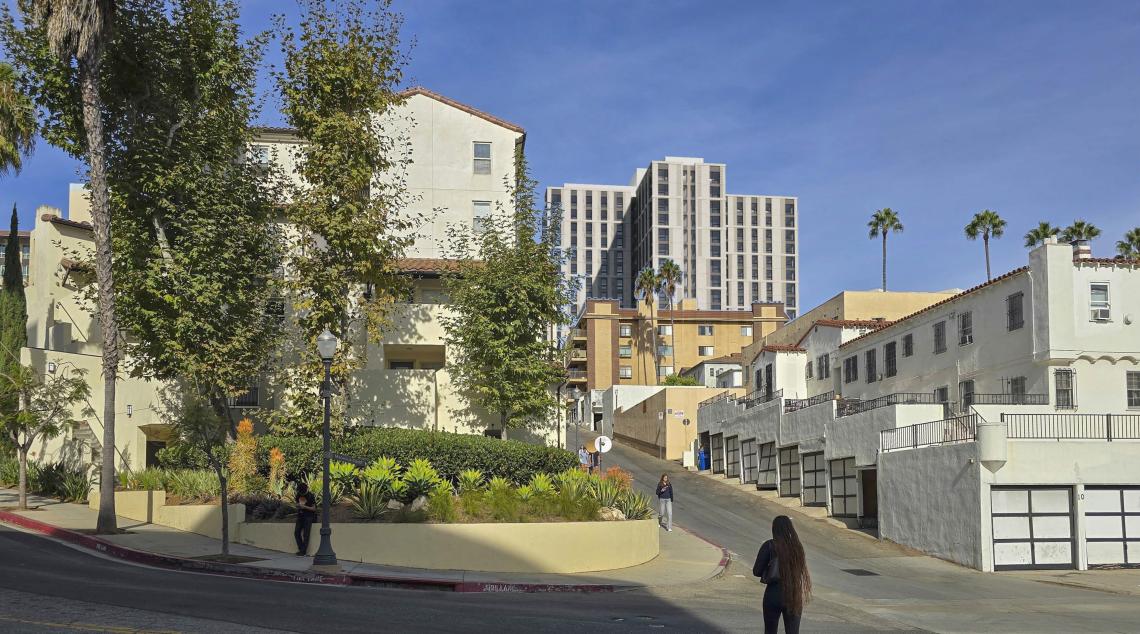When you work on a 100% affordable housing or shelter project in Los Angeles, red tape can feel endless. That’s where ED1 comes in. The city created Executive Directive 1 (ED1) to get qualifying affordable housing and shelters through agency reviews faster.
Table of Contents
ToggleBut ED1 is not plug-and-play. You need the right documentation, local know-how, and someone who understands how LADBS, City Planning, and Housing talk to each other. A skilled ED1 permit consultant can make a real difference.
In this post, we’ll cover:
- What ED1 is, in plain terms
- Who qualifies and how to prove it
- Why having a consultant boosts your chances
By reading, you’ll see exactly how JDJ Consulting Group helps clients clear hurdles and move to construction faster.
How the ED1 Fast-Track Process Works
See how affordable housing moves faster under Los Angeles’ ED1 program.
Confirm ED1 eligibility (Affordable or Shelter project)
Submit plans to LADBS & LAHD with full documentation
Coordinate inter-department reviews and address comments
Receive final approval and begin construction
What is Executive Directive 1 (ED1) in Los Angeles — and Why It Matters
ED1 is a city directive meant to prioritize certain types of housing projects. It instructs Los Angeles departments to streamline reviews, reduce delays, and coordinate approvals for qualifying affordable housing and shelters.
Key Features of ED1
Here’s a table summarizing the core parts of ED1:
| Feature | Description | Source / Notes |
|---|---|---|
| Streamlined review | Projects eligible under ED1 go through a more predictable, ministerial review rather than discretionary processes | (planning.lacity.gov) |
| Faster time goals | City departments aim to complete preconstruction reviews and issue permits faster | (ATC Research) |
| Reduced fees / incentives | Some filing fees or processes are simplified for ED1 projects | (planning.lacity.gov) |
| Inter-agency coordination | Planning, Housing, LADBS, and other departments cooperate more closely | (planning.lacity.gov) |
Because of these features, ED1 gives eligible projects a kind of “fast lane” through the municipal system.
How ED1 Was Introduced and Updated
- The original directive was signed by Mayor Karen Bass in December 2022.
It has since undergone revisions (mid-2023, July 2024) to refine rules and limit overreach in historic districts. (LA Conservancy)
The updated ED1 adds protections in historic districts and for rent stabilized units. Hence. trying to balance housing speed with neighborhood character.
With these updates, ED1 remains a powerful tool — but one with guardrails. It can’t override every zoning rule or erase every review; it offers a clearer, faster path within defined limits.
Who Qualifies for ED1 — Eligibility Rules and Requirements
It’s not enough to want faster review — your project must meet ED1’s rules. A consultant helps you check those boxes and avoid common rejection traps.

Project Types That May Qualify
The two main project types for ED1 are:
- Temporary shelters (for people experiencing homelessness)
- 100% affordable housing (all units deed-restricted to affordable levels)
Not every housing project fits. Mixed projects with significant market-rate units may not qualify under ED1 unless they meet more complex rules.
Income / Affordability Requirements
To be ED1 eligible, projects usually must follow strict income rules:
- All units (except possibly manager units) are at or below 80% of Area Median Income (AMI)
- In some cases, up to 20% of units can be at 120% AMI, provided the average income remains at or below 80% AMI
Documentation & Proof You’ll Need
To show your project qualifies, you must submit:
- Owner’s declaration, affirming intent and control over the property
- Evidence of funding or affordability restrictions
- Project plans (site, floor, zoning)
- Any existing referral or application with City Planning
- A compliance narrative showing how your project meets ED1 rules
A table below shows the typical documents and who supplies them:
| Document / Proof | Supplied by | Role in ED1 Eligibility |
|---|---|---|
| Owner Declaration | Project owner / developer | Confirms that the owner commits to ED1 terms |
| Funding / subsidy proof | Developer / finance partner | Shows the project can meet affordability rules |
| Plans & zoning site info | Architect / planner | Demonstrates compliance with site rules |
| Referral / Planning case file | Developer / consultant | Helps link to City Planning for intake |
| Affordability narrative | Consultant / planner | Explains how the project meets income rules |
Without these documents, a case might be rejected as incomplete, forcing you back into a slower process.
How Projects Lose Eligibility
ED1 status isn’t permanent. It’s tied to your project scope and funding. If those change, you can lose eligibility.
Here are the most common disqualifiers:
Adding market-rate units or commercial components.
Reducing affordability levels after financing changes.
Submitting outdated or inconsistent declarations.
Ignoring LAHD’s ongoing compliance requirements.
Once disqualified, your project goes back to the standard (and slower) review path. That means more hearings, longer plan checks, and higher soft costs.
A consultant helps you avoid that outcome by monitoring every update before it hits City Planning’s system.
ED1 vs. Standard Permit Timeline ⏱️
A comparison of average permit approval times in Los Angeles.
Source: Permit Place & LA Housing Department (2024)
Why Hire an ED1 Permit Consultant in Los Angeles
Here’s the truth: ED1 speeds up approvals, but it doesn’t simplify them. You still deal with multiple departments, technical plan checks, and rounds of comments. The “fast track” can feel more like a maze without the right guidance.

That’s why working with a permit consultant who specializes in ED1 projects can make a measurable difference.
What a Consultant Actually Does
Think of an ED1 consultant as your project’s air traffic controller. They don’t build the plane—they make sure it takes off safely and on time.
A good consultant handles:
Eligibility assessments and documentation. They confirm your project fits ED1 criteria before you file.
Department coordination. They keep City Planning, LADBS, and LAHD in sync.
Strategic submissions. Plans go in complete, properly labeled, and code-checked.
Plan check management. They track comments, fix issues, and reduce resubmittal cycles.
Zoning analysis and entitlement response. Consultants help you address conditions quickly.
Inspection scheduling. Once construction begins, they coordinate clearances and sign-offs.
Every step they handle saves you time, prevents miscommunication, and limits rework.
The Measurable Value
The biggest value isn’t just speed—it’s predictability. When you know what to expect, you can budget and plan construction phases with confidence.
Hiring a consultant can help:
Cut review cycles by up to 30–40%.
Avoid costly redesigns from missed plan details.
Reach permit issuance earlier, reducing holding and loan costs.
Maintain compliance across City Planning, LADBS, and LAHD reviews.
Industry data from Permit Place shows coordinated ED1 projects reach approval two to three months faster than unassisted submissions.
How JDJ Consulting Group Helps
At JDJ Consulting Group, we bring years of experience working directly with Los Angeles departments. Our team understands how city systems work and how to move ED1 projects forward.
We handle every step — entitlements, permits, and owner representation. This full-service approach saves time and reduces stress for developers and housing providers.
We’ve supported both adaptive reuse shelters and ground-up affordable housing. From the first submittal to final inspection, we make sure your project stays compliant.
What sets us apart is local knowledge. We know the staff, the workflows, and the common issues that cause delays. That means we can keep your project in motion when others stall.
If your project might qualify under ED1, we can review it early. Our team confirms eligibility, sets a realistic timeline, and helps you avoid redesigns or missed deadlines.
What Does an ED1 Permit Consultant Actually Do?
An ED1 permit consultant guides your project through Los Angeles’ complex approval process. They connect your architects, engineers, and city reviewers to keep everything aligned.
Consultants check your plans for affordable housing rules, zoning codes, and CEQA exemptions. They also manage communication with key departments — Housing, Planning, and Building & Safety.
Because ED1 projects move on an expedited track, one small mistake can cause big delays. A consultant prevents those issues by catching errors early and coordinating reviews.
In short, they turn a complicated process into a clear, steady timeline. That saves time, reduces stress, and keeps your project moving.
Top Delays Avoided by ED1 Consultants
Consultants help prevent costly resubmittals and correction cycles.
Source: JDJ Consulting internal data (2025)
🏗️ Is Your Project ED1 Eligible?
Answer a few quick questions to see if your development qualifies.
How ED1 Consultants Help Avoid Costly Delays
Most Los Angeles developers hire ED1 consultants to save time — and time equals money. Every week of delay can raise costs or push financing deadlines.
Experienced consultants know how to prepare complete, compliant packages. They spot missing details, fix red flags, and handle agency questions before they slow you down.
If your site needs zoning clearance or sits near an environmental area, a consultant can plan for that early. Without that foresight, you could lose months waiting for resubmittals.
By reducing corrections and improving communication, consultants cut approval times by weeks/months. That can make the difference between breaking ground on schedule — or not at all.
When Should You Hire an ED1 Permit Consultant?
The best time to hire an ED1 consultant is before you submit anything to the city. Early involvement lets them guide your design and paperwork from the start.
If you wait until after submittal, you may face corrections or compliance issues that are costly to fix. Starting early means fewer delays and fewer surprises.
For developers with affordable or shelter housing projects, keeping a consultant on retainer pays off. Once they know your team and workflow, approvals move faster every time.
Choosing the Right ED1 Consultant
Not all permit consultants understand ED1. The program is still new, and many professionals are learning as they go. Choosing the right consultant can save you months and thousands of dollars.
Start with experience. Ask if they’ve handled ED1 projects before or worked with affordable housing developments in Los Angeles. Familiarity with city departments is key — especially Housing, Planning, and Building & Safety.
Next, look for clear communication. Your consultant should explain each step, set expectations, and flag risks early. A good one keeps you informed, not confused.
Also, consider project management skills. ED1 involves multiple teams — architects, engineers, lenders, and city staff. The right consultant knows how to coordinate all of them under tight deadlines.
Finally, check for proactive problem-solving. The best consultants don’t wait for issues; they prevent them. They know all about zoning rules, documentation gaps, or shifting timelines before they stall your project.
Hiring the right ED1 consultant isn’t just about compliance. It’s about confidence — knowing your project is moving forward without hidden setbacks.
Key Takeaways: Why an ED1 Consultant Is Worth It
ED1 has made it easier to get affordable and shelter housing approved in Los Angeles — but “easier” doesn’t mean “simple.” Every form, drawing, and declaration still needs to align perfectly with city requirements.

That’s where an experienced consultant becomes your best investment. Here’s what they bring to the table:
Main Benefits of Hiring an ED1 Consultant
Time savings: Fewer review cycles and faster plan approvals.
Reduced stress: One point of contact managing all city coordination.
Lower costs: Early problem-solving means fewer redesigns and resubmittals.
Better outcomes: Higher chance of full ED1 qualification and final approval.
Typical Project Outcomes
| Project Type | Without Consultant | With ED1 Consultant |
|---|---|---|
| 100% Affordable Housing | 4–6 months of back-and-forth plan checks | 1–2 review cycles, faster approval |
| Adaptive Reuse Shelter | Risk of missed documentation or CEQA errors | Complete submittal and coordinated clearance |
| Ground-Up Construction | Frequent corrections, unclear timelines | Clear roadmap and proactive updates |
Source: compiled from LA Housing Department and consultant case data.
Quick Red Flags When Managing ED1 Alone
Submittal returned for missing owner declaration
Delays from uncoordinated Planning and LADBS comments
Missed affordability verification deadlines
Confusion over ministerial vs. discretionary review
If any of these sound familiar, a consultant can immediately step in to fix them — before they derail your timeline.
Checklist: Signs You’re Ready to Bring in Help
- Firstly, you’ve confirmed your project is 100% affordable or a shelter use
- Secondly, you have draft plans but need to know what to submit first
- Thirdly, you’ve already submitted once and got correction comments
- Finally, you want to budget time and cost more accurately
⏳ ED1 Permit Time Savings Calculator
Estimate how much faster your project could move under ED1 with a consultant.
Ready to Start Your ED1 Project?
Affordable housing projects need speed and strategy. JDJ Consulting Group helps you move faster through Los Angeles’ ED1 process — from eligibility to final permits.
📅 Book a Free ConsultationWork with JDJ Consulting Group on Your ED1 Project
Affordable and shelter housing projects need more than good design. They need precision, timing, and expert coordination. That’s where JDJ Consulting Group steps in.
Our team specializes in Executive Directive 1 (ED1) projects across Los Angeles. We handle everything from early eligibility reviews to final inspections. Hence, ensuring your project never gets stuck in red tape.
What JDJ Offers for ED1 Projects
- ED1 Eligibility Review: We confirm your project meets 100% affordability before submission.
- Permit Expediting: We coordinate directly with LADBS, LAHD, and City Planning to speed up plan reviews.
- Entitlement Strategy: We handle zoning and CEQA-related issues early to prevent costly redesigns.
- Owner Representation: We serve as your advocate during plan checks, and agency meetings.
Why JDJ Makes a Difference
| Common Project Challenge | How JDJ Solves It |
|---|---|
| Delays from missing documents | Complete pre-submittal checklists and document audits |
| Conflicting agency comments | Coordinated response strategy with all departments |
| Tight funding timelines | Prioritized plan tracking and milestone scheduling |
| Complex zoning issues | Expert entitlement review and compliance strategy |
We know how each Los Angeles department operates — their timing, their review habits, and what triggers delays. That insight helps us keep your project on schedule and within budget.
Ready to Start?
Here’s how you can begin today:
Book a free 30-minute intake call – share your site, concept, and timeline.
Send your draft documents – we’ll review your eligibility and next steps.
Get a custom ED1 timeline and proposal – tailored to your project scope.
Book Your Consultation — and find out how quickly your affordable housing or shelter project can move forward under ED1.
If your goal is to deliver housing that makes an impact, we’ll make sure the process helps — not hinders — your progress.
FAQs: ED1 Permit Consultant Los Angeles
What is the ED1 program in Los Angeles?
Executive Directive 1 (ED1) is a city initiative. It was proposed by the Mayor of LA to speed up the approval process for affordable and shelter housing. It requires all city departments to prioritize ED1-qualified projects. Thus, shortening timelines for plan check, environmental review, and permitting. The goal is to combat housing shortage by fast-tracking development that meets affordability housing.
What does an ED1 permit consultant do in Los Angeles?
An ED1 permit consultant guides developers through the city’s ED1 process from start to finish. They help with:
Preparing accurate application packages
Coordinating with LADBS, Planning, and LAHD
Tracking approvals and corrections
Ensuring compliance with ED1 eligibility and zoning standards
Their expertise prevents delays and helps projects qualify for priority processing.
Who qualifies for the ED1 fast-track program?
Projects that include affordable or interim housing are typically eligible. To qualify:
The property must be in Los Angeles city limits
Units must meet affordability thresholds defined by LAHD
The development must follow applicable zoning and safety codes
A consultant verifies eligibility before submission to ensure your project receives priority review.
How does ED1 help speed up affordable housing permits?
ED1 eliminates bureaucratic bottlenecks by coordinating reviews across multiple departments. Key time savings come from:
Concurrent plan checks
Streamlined environmental review
Dedicated city case managers
This structure can cut months off traditional permitting timelines. Thus, helping affordable housing start construction sooner.
What documents are required for an ED1 permit application?
Applicants should prepare:
A completed ED1 eligibility declaration (LAHD form)
Site plans, floor plans, and elevations
Zoning and density compliance reports
Environmental clearance documents (CEQA/CE)
Utility and access confirmations
A consultant ensures all documents meet submission standards and formatting requirements.
What is the difference between ED1 and standard permit processing?
Under ED1, city agencies treat qualifying housing projects as top priority. Standard permits:
Follow normal queue order
Require sequential reviews ED1 permits:
Receive concurrent review
Have reduced correction cycles
Get fast scheduling for clearances and plan checks
This structured priority system accelerates affordable housing delivery.
How long does ED1 permit approval take in Los Angeles?
While timelines vary, ED1 can cut approval time by 30–50% compared to traditional processes. For example:
Standard multi-family approvals: 8–12 months
ED1-qualified projects: 4–6 months
The reduction depends on application accuracy, consultant coordination, and departmental workload.
Why should developers hire an ED1 permit consultant?
Because the process is highly documentation-driven. A consultant:
Anticipates potential LADBS or Planning corrections
Coordinates multiple departmental responses
Keeps communication consistent
Reduces back-and-forth delays
They serve as a project navigator, ensuring your ED1 application remains compliant and on schedule.
Can a non-affordable housing project apply under ED1?
No. ED1 is exclusive to affordable and shelter housing projects. Market-rate or commercial projects follow standard permitting. But, mixed-income developments may qualify if the required percentage of units meet the threshold.
Which city departments handle ED1 permits?
Key agencies involved include:
LADBS (Building & Safety) – plan check, inspections
LA City Planning – land use and zoning review
LAHD – verifies affordable housing compliance
Public Works and Fire Department – safety and utility clearances
A consultant coordinates between these departments for faster turnaround.
What is the LAHD ED1 Declaration Form?
This mandatory form confirms that a project meets the city’s affordable housing definition. It must be approved by the Los Angeles Housing Department (LAHD) before the project enters the fast-track queue. Consultants often prepare and review this form to avoid rejection for incomplete information.
How does ED1 relate to Los Angeles’ housing crisis?
ED1 directly targets the backlog of affordable housing projects delayed in city review. By prioritizing these developments, the directive helps:
Speed up housing supply
Support shelter expansion
Reduce permit friction for non-profit developers
It reflects the city’s long-term strategy to ease the housing crisis through procedural reform.
What types of housing qualify under ED1?
ED1 applies to:
Affordable multi-family developments
Transitional and interim housing
Shelter facilities
Supportive housing for vulnerable populations
Luxury or purely market-rate developments do not qualify unless they include affordable set-asides.
How can developers confirm zoning compliance before applying?
A zoning review ensures that the site allows the intended use and density. Developers should:
Obtain a parcel report and zoning map
Confirm land-use compatibility
Check any overlays or community plan updates
ED1 consultants often perform pre-screening to verify eligibility before submitting to Planning.
What are the biggest causes of ED1 permit delays?
Common causes include:
Missing documentation in the initial submittal
Conflicting site data (zoning vs. land-use)
Slow departmental coordination
Late environmental clearances
Hiring a consultant minimizes these risks through proactive file review and consistent follow-up.
What is the difference between ED1 and ED2 in Los Angeles?
Both are mayoral directives, but they address different policy goals.
ED1: Prioritizes affordable and shelter housing approvals
ED2: Focuses on homelessness and emergency housing response
While similar in intent, ED1 is more development-oriented, dealing with new construction permits.
Is environmental clearance required under ED1?
Yes. Although ED1 streamlines approvals, projects must follow CEQA (California Environmental Quality Act). But, the city often uses categorical exemptions or expedited reviews for qualifying housing. Consultants coordinate this with Planning and Environmental departments.
How can small developers benefit from ED1?
Even small or mid-sized builders can leverage ED1 if their project includes affordable units. Benefits include:
Shorter review timelines
Reduced holding costs
City assistance for clearances
How does ED1 impact Los Angeles neighborhoods?
ED1 encourages balanced growth by incentivizing affordable housing in diverse neighborhoods. Benefits include:
Improved housing accessibility
Redevelopment of underused sites
Increased construction activity
The policy supports LA’s long-term goal of equitable housing distribution across the city.
How to start an ED1 permit application in Los Angeles?
The process begins by confirming project eligibility through LAHD. Then:
Prepare the ED1 Declaration Form.
Submit complete plans to LADBS.
Coordinate with City Planning for land use verification.
Track review progress via the city portal.
Consultants help organize these steps and ensure no stage is missed.






